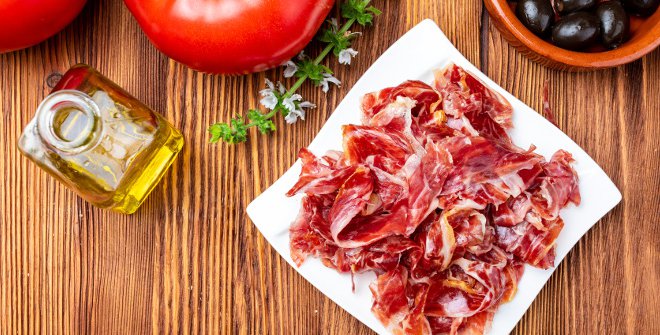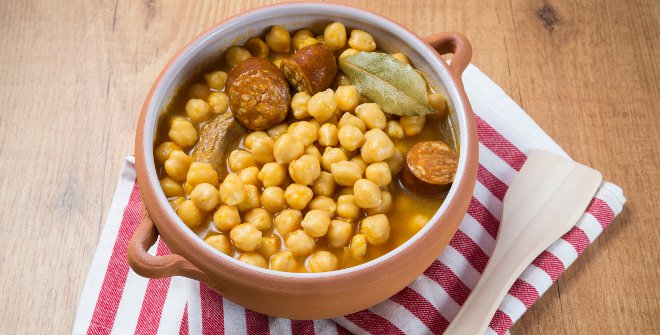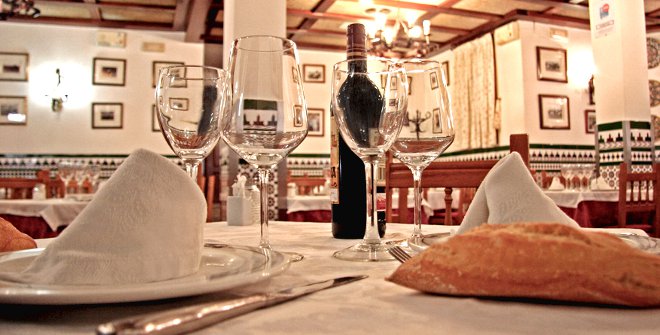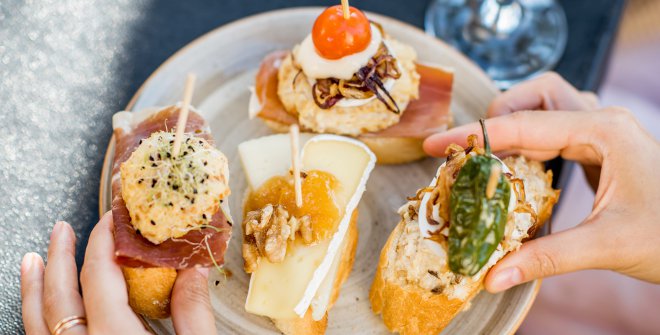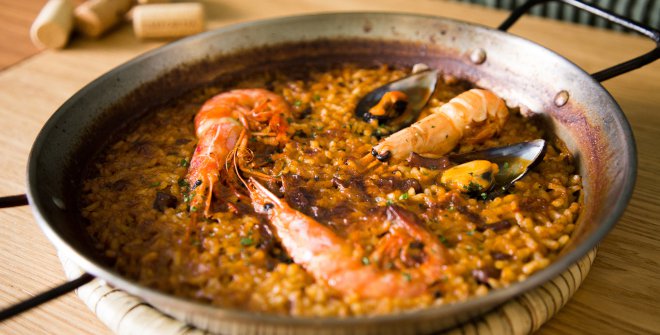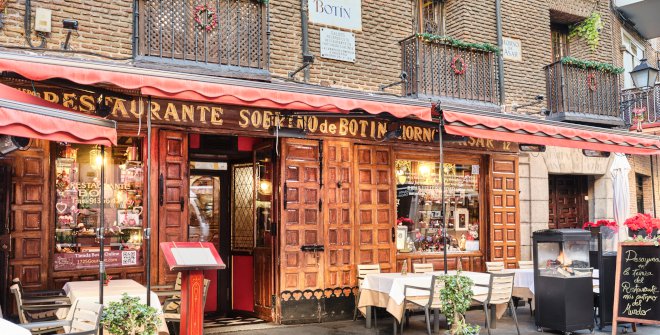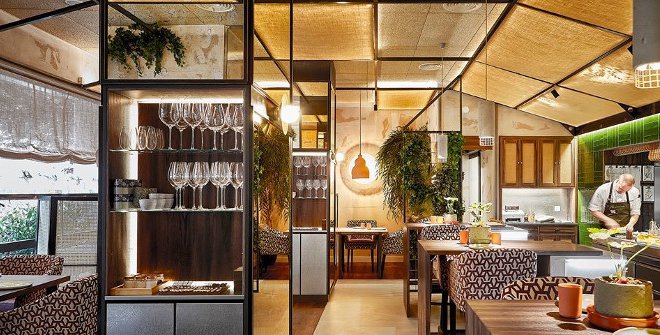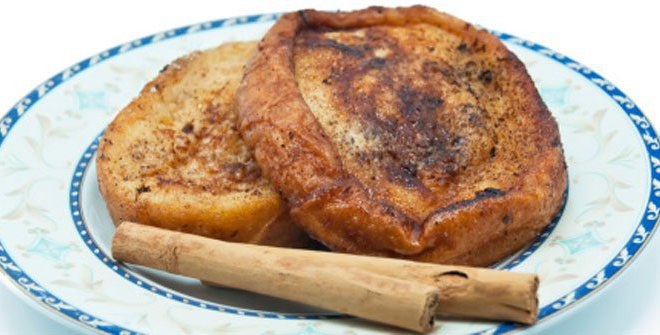Flavours from all over Spain in Madrid
Madrid boasts a rich gastronomic tradition of its own, with classic recipes such as three-stage stew, tripe, snails, squid sandwiches and tapas. However, the city also offers the chance to savour culinary delicacies from other parts of Spain. Every autonomous community has a “gastro” delegation here in the capital, so it's easy to sample the best bean stew from Asturias, delicious sucking pig from Segovia, tasty calçots (giant spring onions) from Catalonia and mouth-watering Galician-style octopus, to name just a few. We've listed some typical Spanish dishes below—be sure to try them during your visit to the capital.
Paella
Hailing from Valencia, paella is one of the icons of our gastronomy. The main ingredient is rice but there are many variations of the dish: seafood paella (with fish and seafood), mixed paella (meat and seafood) and mountain paella (with pork ribs, rabbit and chicken). Some very well-known chefs dare to experiment with more exotic recipes—take, for example, Madrid's very own Rodrigo de la Calle, who has gained much acclaim for his oyster paella. You can try this contemporary twist at the emblematic San Miguel Market, located just off Plaza Mayor. After a more traditional paella? Head to La Paella de la Reina, next to Gran Vía avenue, or La Taberna de Peñalver. Or why not check out our feature on the city's leading rice restaurants?
Roast suckling pig
Segovia and Arévalo are home to some of the most renowned restaurants for enjoying this delicious, centuries-old recipe, but you can also sample it at several establishments right here in Madrid. The meat is typically cooked in an earthenware dish inside a wood-fired oven until the suckling pig’s skin is perfectly toasted and becomes nice and crunchy. They say that the best in Madrid can be savoured at Coque, Botín, Casa Pedro and Los Galayos. It’s also worth mentioning that Castile and León is famous for both lamb and suckling lamb, which are among the most typical dishes of Castilian cuisine and a very popular choice for celebrations throughout Spain.
Galician octopus
In Ancient Greece, Aristotle noted the octopus’s remarkable ability to camouflage itself. What we don’t know is whether the philosopher ever had the chance to taste it. If not, it’s certainly his loss—something the people of Galicia would agree with. They prepare it like no one else! All it needs is a dash of paprika, salt and olive oil. Here in Madrid, you’ll find plenty of Galician restaurants where you can enjoy this speciality: La Gran Pulpería, O’Pulpo, Lúa (which holds one Michelin star), Los Montes de Galicia, Villa de Foz, Garelos and Morgana.
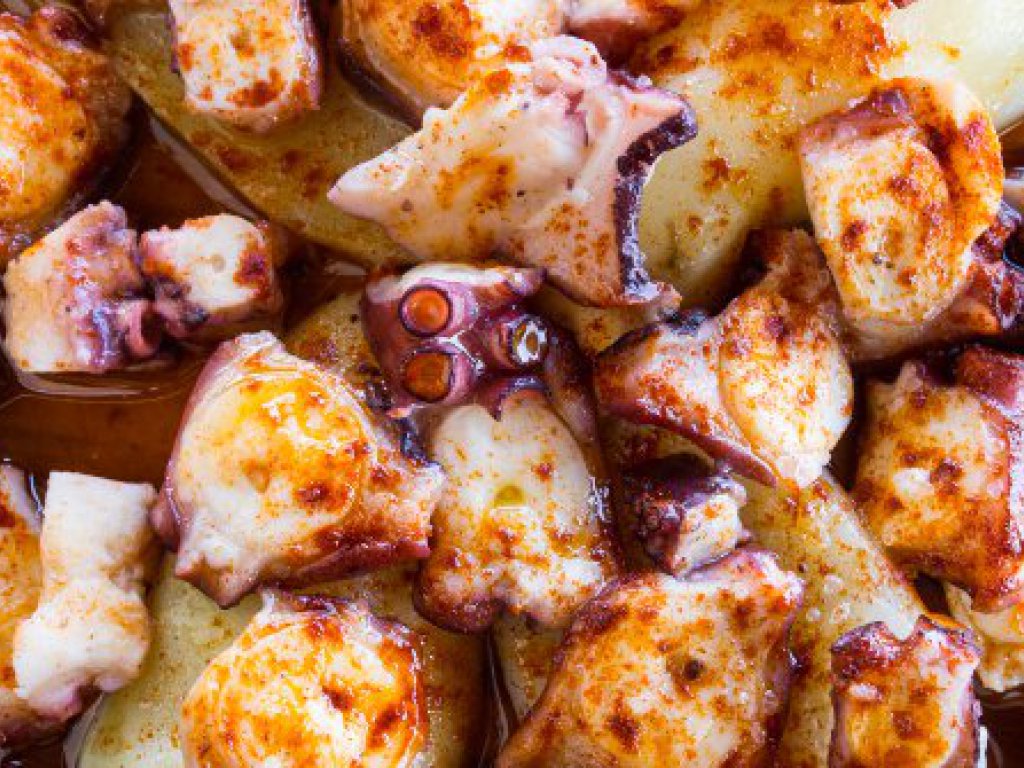
Bean stew
Fabada is the tastiest and most traditional dish from the rich northern cuisine of Asturias. This all-round classic is prepared using fabes (locally sourced white beans), spicy chorizo sausage, lard, Asturian black pudding and pork shoulder. It takes time and, according to popular legend, it tastes better the next day. In Madrid, it can be sampled at several establishments although we highly recommend Casa Hortensia, Asturianos, El Oso and Asgaya—a signature cuisine restaurant with its roots firmly in Asturias. La Xida is also worth mentioning as it's the first restaurant in the capital to combine Mexican and Asturian dishes, located in the Salamanca neighbourhood.
Fried fish
As long as it’s well prepared, fried fish is an absolute delicacy typical of the southern Andalusian region. A usual serving often includes red mullet, sardines, anchovies, cuttlefish and more. Here's a tip: the secret lies in the quality of the ingredients and, above all, how they're fried. It can be tricky to get right, but luckily here in the capital there are several establishments that have truly mastered the dish—no doubt you’ll be licking your fingers at the end, as it’s definitely something best enjoyed with your hands. Looking for some restaurant recommendations? Check out La Giralda, Bodega La Andaluza and Taberna del Puerto. At El Albero, located just outside the city in Paracuellos del Jarama, they serve what they call “Jarama” anchovies which are absolutely incredible.
Marmitako
Basque cuisine’s dish par excellence, marmitako is a hot tuna stew accompanied with potatoes, onions, green and red peppers, and tomato. You’ll find this culinary delight on every table in the Basque Country. In spite of it being a very rich stew, it’s more common in summer, as that’s when longfin tuna is caught. In Madrid, you can sample it at many restaurants specialising in dishes from the area, such as Dantxari, Jai Alai and Taberna Gaztelupe.
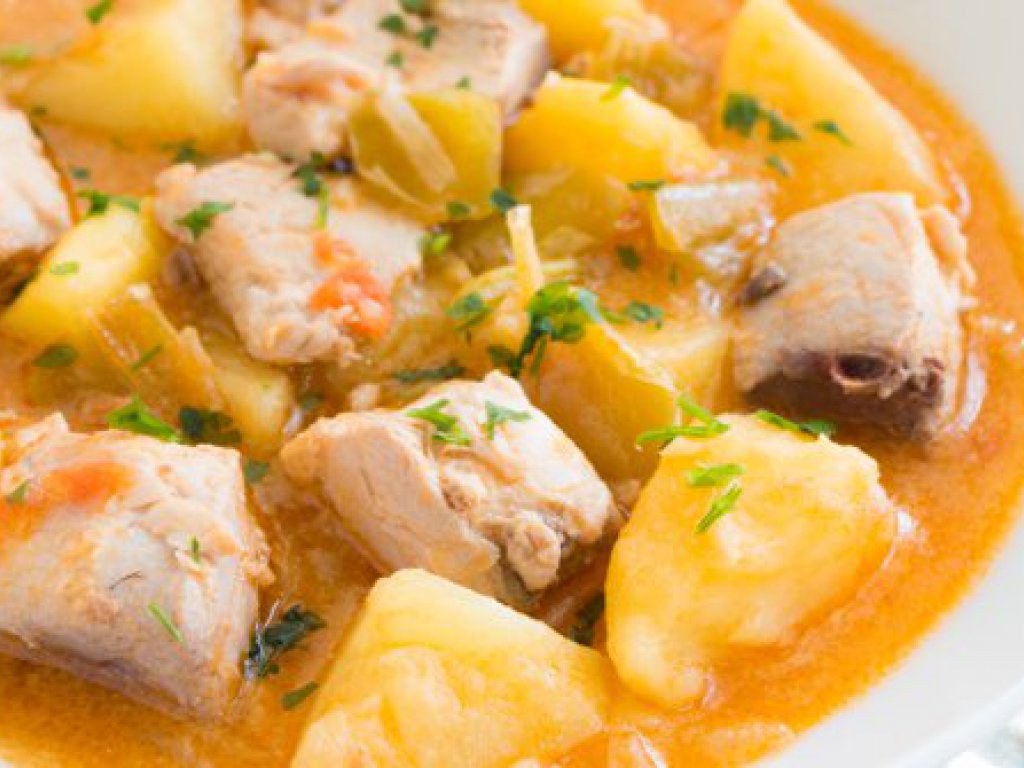
Calçots
This tender, bulbous and sweet variety of onion is commonly found in inland Catalonia. A signature dish of the region's gastronomy, calçots are typically eaten in late winter or early spring, accompanied by almond and red pepper romesco sauce or salvitxada. They’re the star of calçotades—daytime barbecues held around that time of year—where the vegetable is charred to perfection on the grill. Here in the city, you can sample them at Casa Jorge, Paradís Madrid, Can Punyetes and Candeli.
Oxtail
This traditional stew from Cordoba features oxtail slow-cooked in a rich sauce made from onions, tomatoes, carrots, wine, olive oil, garlic and a few peppercorns. The recipe is believed to date back to Roman times, with references found in the book De re coquinaria (The Art of Cooking) by the renowned epicure Apicius. Some of the best oxtail—or rabo de toro—in the capital can be savoured close to Las Ventas Monumental Bullring, at El Fogón de Trifón. Other nearby restaurants, such as Taberna El Burladero and Los Timbales, also serve excellent versions of this tasty dish.
Canarian wrinkled potatoes
Found on the menu of virtually every establishment in the Canary Islands, this dish is brilliantly simple. All you need are a few very special small potatoes, typically served with mojo—a sauce that can be either spicy or mild. If you’re eager to try them in Madrid, go no further than La Cecilia de Allende, Taberna Los Gallos, Picón Madrid or Gofio, which boasts a Michelin star.
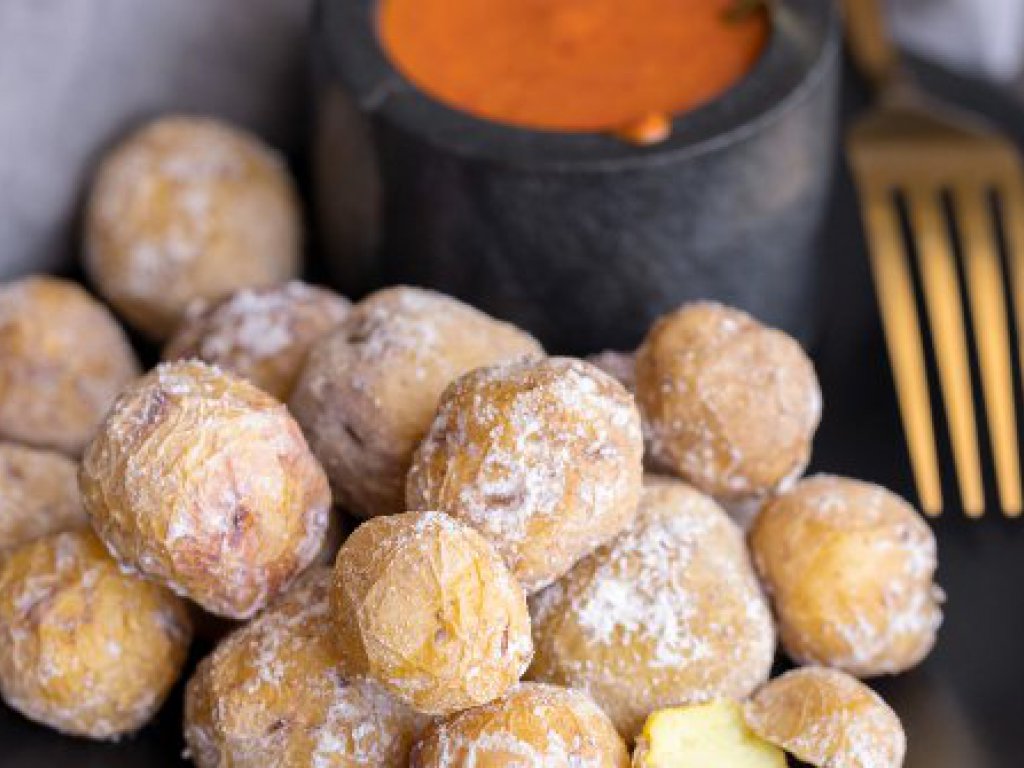
Torreznos
These crispy bites of pork rind are either fried or sautéed on the grill, and while they're affordable and simple, they’re also packed with flavour. Not only are they a classic of Spanish cuisine, but they also deliver a serious boost of energy. You’ll find them all over the country, usually served as a tapa or aperitif, though each region has its own take on the dish. In Madrid, some of the best torreznos can be found at Neotaberna de Santerra, La Raquetista, Treze, Taberna Arzábal, Lakasa and Los Torreznos Bar—widely regarded for serving up some of the best pork crackling in the city. The latter has three locations: No. 149 Calle de Lopez de Hoyos, No. 69 Calle de Alonso Cano and No. 88 Calle de Goya.
Potato omelette
Found in virtually every bar and restaurant across Spain, tortilla de patatas is the national dish par excellence. It’s made with finely diced potatoes, eggs, oil, salt and, depending on personal preference, onion—an ingredient that continues to spark lively debate all over the country. In the city, some of the most popular spots to try a delicious omelette are: Casa Dani, Hevia, Taberna Pedraza, Pez Tortilla, Las Tortillas de Gabino, José Luis and Bodega de La Ardosa.
Migas from Extremadura and La Mancha
Different parts of Spain have put their own twist on this popular classic. In Extremadura or La Mancha, for instance, you'll hear it called migas del pastor (shepherd’s breadcrumbs), migas ruleras (shared breadcrumbs) or migas de gañán (labourer’s breadcrumbs). While the recipe may vary depending on local tradition and individual taste, the basic ingredients remain the same: bread, olive oil and garlic. As a dish closely tied to the harvest season, it’s often served with grapes. You can try it at establishments like La Vera—where they specialise in cuisine from Extremadura—, Casa de Castilla La Mancha en Madrid and Hogar Extremeño de Madrid.
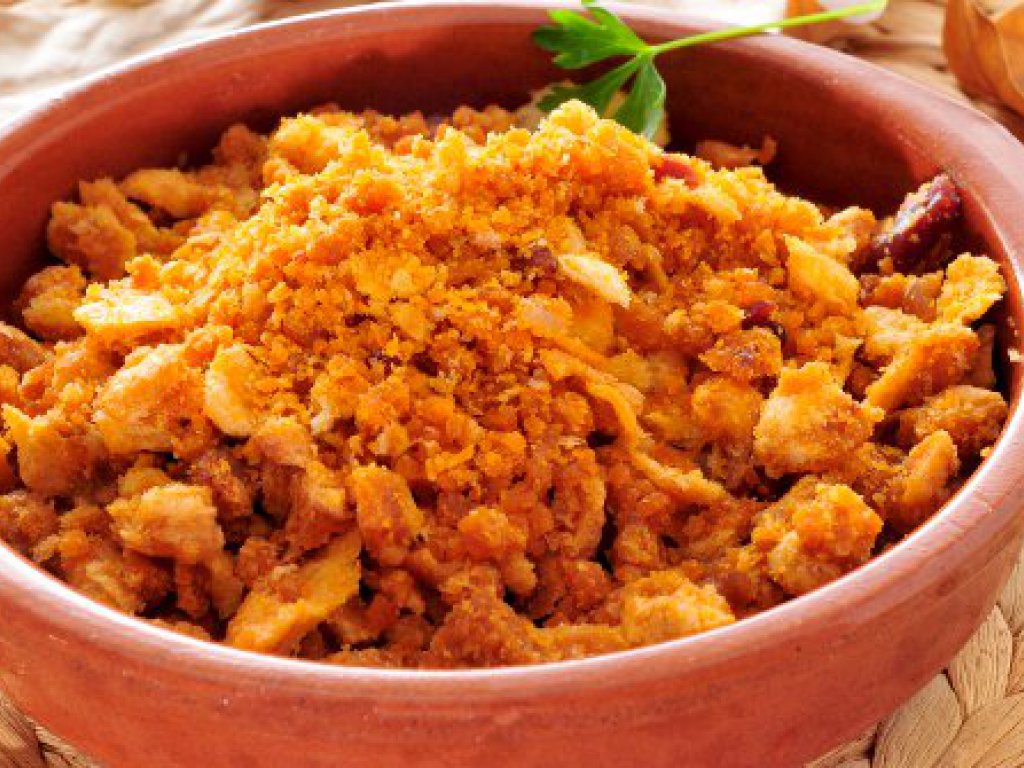
Gazpacho and salmorejo
These two jewels in the crown of Spanish cuisine are very popular in summer, as they’re always served chilled. The key difference between them lies in their texture and preparation. Gazpacho—often called Andalusian gazpacho—is a cold soup made of vegetables and typically seasoned with oil and vinegar. It has a smooth, light texture, making it ideal for drinking from a glass or bowl. Salmorejo, on the other hand, is a much thicker emulsion and is similar in consistency to a mayonnaise. Both are served at Lambuzo and 11 Nudos Terraza Nordés, where their salmorejo is served with diced 100% Iberian acorn-fed jamón.
Croquetas
Whether enjoyed as a snack or a larger sharing portion, it’s almost impossible to find a bar in Madrid that doesn’t serve up these delicious little morsels. A type of traditional comfort food, croquettes are small deep-fried balls or rolls made from a variety of fillings bound together with béchamel sauce, breadcrumbs and egg.
Though croquettes originally hail from France—where the word croquette means "crispy"—they have become a beloved delicacy throughout Spain. The béchamel sauce, which is a crucial ingredient in croquetas, was invented or at least perfected by Louis Béchameil, the head chef to King Louis XIV. Don't miss the croquetas at Santerra, winner of the World’s Best Croqueta award at the 2022 Madrid Fusión Alimentos de España food convention.
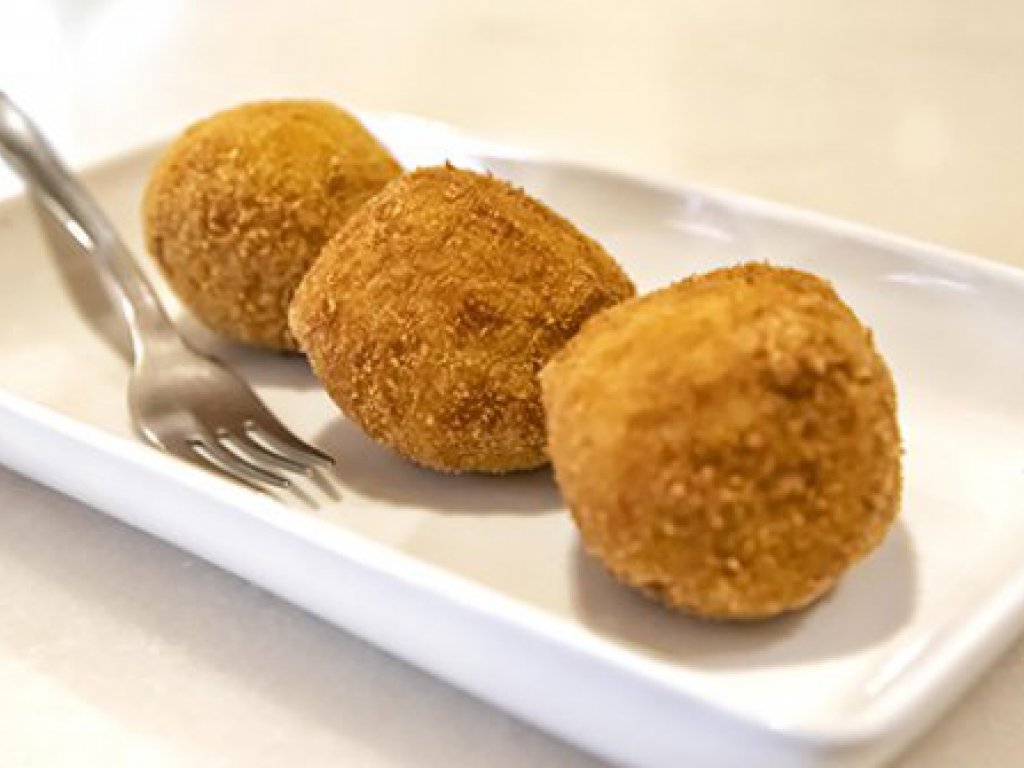
Iberian ham and cold meats
Among Spain's favourite foods are cold meats, most of which come from pork. Popular varieties include spicy chorizo sausage, made by marinating minced meat with paprika and garlic before curing and air-drying it thoroughly. Black pudding, or morcilla, is another tasty option! Although it doesn’t actually contain meat, it is made with pig’s blood and seasoned with onions, garlic and spices. Chistorra or longaniza, which can be eaten fried or roasted, is typical of the Navarre region. It is prepared with freshly minced pork which is mixed with fat, garlic, salt, paprika and parsley. Dry-cured pork loin, on the other hand, is sliced thinly and eaten raw, usually served with a piece of bread. It’s easy to tell the difference between salchichón and fuet—both of which are variations of cured pork sausage very similar to longaniza—as fuet is the thinner of the two.
And then there's the crème de la crème of Spanish cuisine: el jamón. We’re talking about Serrano and Iberian ham—both of which come from the leg of the pig, the same part of the animal used for pork shoulder or cooked ham. Serrano ham is made from the back legs, which are seasoned and cured in the fresh air. The front legs can be prepared in the same way, these are known as paletillas, or shoulders.
You can visit the shop of the prestigious Ibérico ham and charcuterie brand Joselito’s (No. 30 Calle de Velázquez), which perfectly combines the charm of the traditional deli with personalised customer service and a tasting bar where you can sample all their products.
